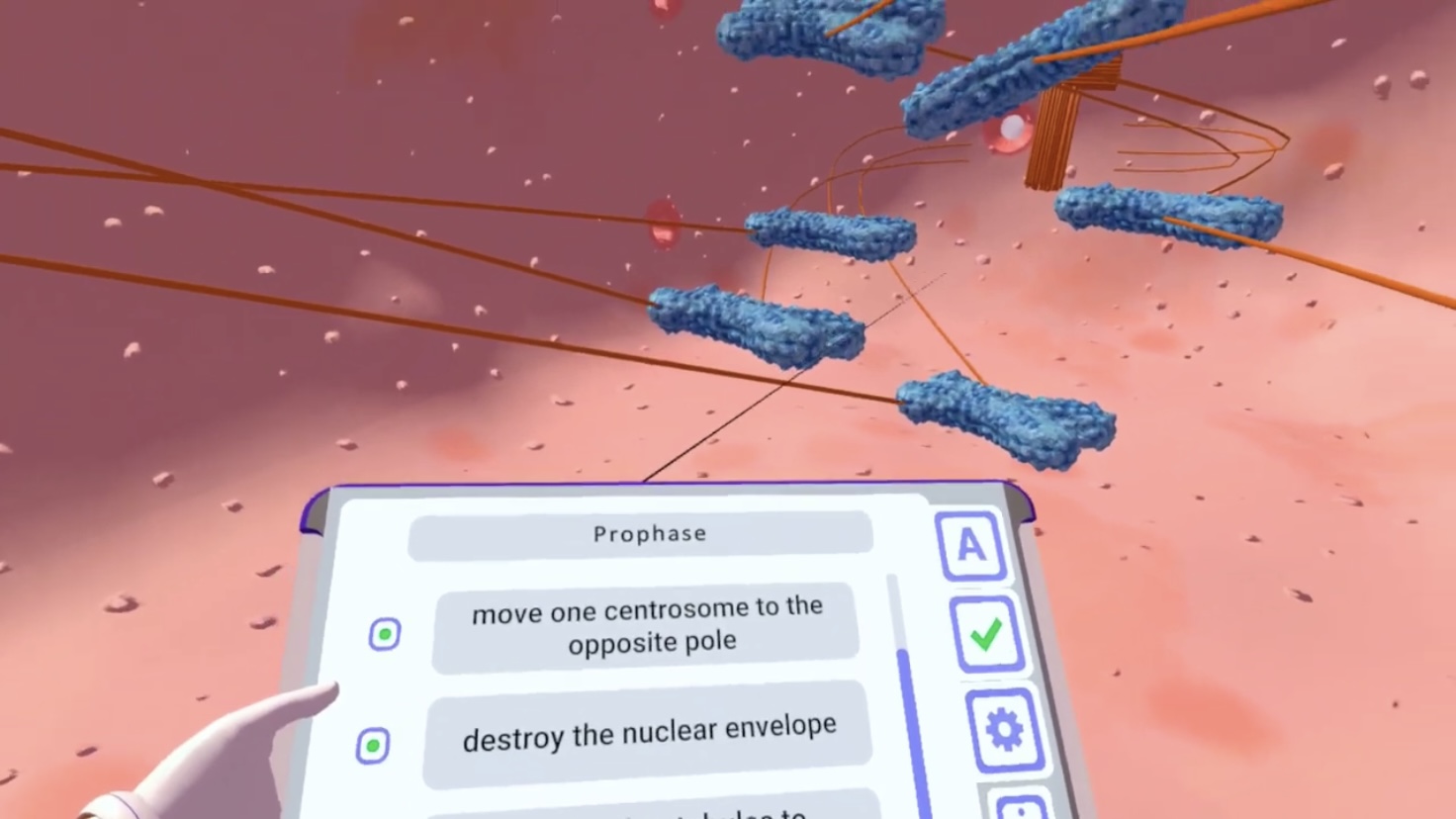
MITOSIS

So the labs fit your lessons perfectly.
Cambrigde curriculum alignment
Our VR labs are aligned with the Cambridge curriculum at both Upper Secondary (IGCSE) and Advanced (AS & A Level), covering core topics and learning objectives to support effective preparation and in-depth understanding. We’ll soon be launching detailed descriptions for each simulation aligned with the Cambridge curriculum. In the meantime, please explore our brief catalog and topic-based alignment below.
Our catalog